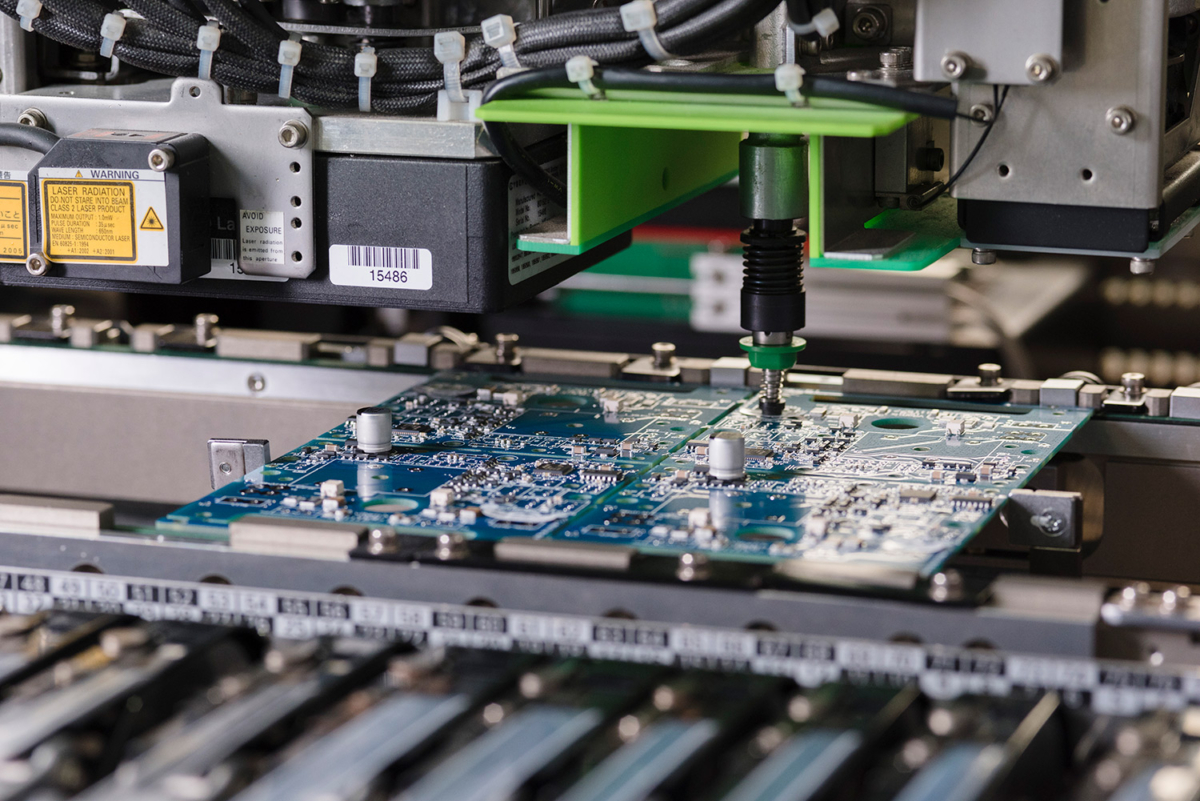By Sao-Hsia Tang and Lewis Liu,
Innovations can spawn technological triumphs, from the intricate orbital navigation systems guiding the massive International Space Station to the tiniest printed circuit board.
PCB innovation is racing at record speed, and ingenuity is reflected everywhere, particularly within the steady march to extreme miniaturization of integrated circuits (ICs) and overall board designs. Examining trends toward miniaturization and learning more about innovations to address those trends can help designers better understand the challenges ahead and how they can solve them.
IC and board design miniaturization is driven by the PCB industry’s transition to advanced high-density interconnects (HDI), with their greater wiring density per unit area, advanced multi-layer boards (MLB) featuring two or more inner layer PCBs in a compact design, and more layer counts with high density through hole as well as blind via design. Also powering the drive to miniaturize are IC substrates (FC-CSP and FC-BGA) connecting chips and the PCB using a conductive network of traces and holes.
Extreme miniaturization is mandatory because of the increased expectations of users for added power, higher speeds, and greater functionality in tightly packed, smaller spaces. These demands make HDI, MLB, and IC substrate designs contrast significantly from more conventional boards. The transition to advanced PCB and additional innovations to meet demands for higher functionality amid steadily shrinking design space is producing more powerful mobile devices and the overall proliferation of consumer electronics. It also is driving the progression to artificial intelligence (AI) capabilities and advanced driver assistance systems (ADAS) in vehicles, to name only four sectors.
Within the transportation sector, electrification itself will create significant demand for HDI, advanced MLB, and IC substrates. Those high-performance boards must integrate their added functionality and associated interconnects into smaller spaces and thus utilize thinner boards and finer circuits.
While there has been substantial progress, the pace of PCB innovation must accelerate. According to research conducted by Prismark, global IC substrate manufactured product revenue will reach US12.8 billion in 2023 and US20 billion in 2027. Without continuous innovation that meets the trend to miniaturize packages while adding more power and functionality in the face of increased design density and shrinking available space, it would be impossible for PCB fabricators to keep pace.
Conquering Miniaturization’s Challenges
Studying which device innovations are igniting increased PCB miniaturization, manufacturing process improvements, and higher integration will help meet today’s trends. Mobile device innovation is a good example.
Metallization of materials, fine-line circuits created by applying advanced dry film photoresist and adding more uniformity through plating can advance PCB manufacturing processes. With mobile phones and other hugely popular consumer products, vastly increased functionality requirements must be met promptly. Buyers will not wait.
Many devices now require the use of more fine-line PCBs to match up with design requirements to boost their functionality. To gain functionality, increasingly crowded micron-thin fine lines are being designed into smaller spaces. PCBs featuring fine-line design reach the pitch to 20µm particularly at the IC substrate, allowing more circuits to be deployed on the PCB and creating more opportunities for adding more functionalities.
Additionally, the use of MLBs allows manufacturers to connect selected board layers via circuitry, thus creating more connections in compact spaces.
The increased adoption of IC substrates is due to the strong demand for high-performance computing, high-end servers, leading-edge notebook, or desktop CPU and AI applications, where multiple cores and dies are used for advanced performance. The substrate size and routing density increase the interconnection to the larger die and between the different dies.
Yet the fact remains that the finer the trace and space, the more challenging it is for board designers to ensure signal integrity and reliability. Fine-line design aided by effective and performance-enhancing materials is a growing challenge for design teams globally. Fortunately, innovations are emerging to help address these design challenges.
One DuPont innovation, Riston® DI1500/1600 (LDI) and Riston® SD2000 (Stepper) dry film photoresist, helps achieve more precision fine-line circuit capabilities using direct imaging and stepper exposure systems. Its superior adhesion and resolution capability, as well as strong chemical resistance, can help lower defect rates and improve production yields. The overall features also can contribute to satisfying miniaturization objectives.
Another innovation from DuPont is a metallization solution to achieve more uniform trace distribution through an advanced plating tool whose concept is from the semiconductor industry to improve process yield.
While designing-in miniaturization is a continuous hurdle, the other looming challenge is achieving consistent, efficient, high-quality, and cost-effective PCB fabrication processes.
PCB Fabs’ Goal? Increasing Yields, Boosting Efficiency
Innovators who are mass-producing miniaturized PCBs are optimizing their PCB fabrication processes and aiming for increased yields and greater efficiencies. It is a critical bottom-line consideration.
Producing extremely small PCBs requires high-precision manufacturing techniques such as laser drilling and photolithography. These tools help ensure that traces and spaces are both designed accurately and exhibit consistent production quality.
As the pace of materials development grows steadily, these surface treatments can promote better adhesion and use electroless copper to accelerate deposition for the conductive dielectric layer.
Aiding designers is a novel surface treatment from DuPont™ Circuposit™ 7800 desmear process with Circuposit™ 7840 remover. The desmear solution exhibits uniform surface morphology on both conventional and advanced dielectrics. It can offer good peeling strength and even performance. The solution addresses the smear residue left because of the drilling of an MLB by preventing the smear from insulating the inner layer of copper and the holes copper. This treatment can also coarsen the hole wall, providing the resin surface with a honeycomb-shaped surface roughness. This creates a more robust adhesion surface for the electroless copper in subsequent production operations. DuPont™ Circuposit™ SAP800 electroless copper also provides uniform deposition to perform good peeling strength and reliability.
Additional innovations are gaining attention. For instance, microvia fillings are used as interconnects between layers in HDI substrates and PCBs to accommodate the high input and output density of advanced packages. Copper pillars are used as plating on the PCB to increase the conductor and surface pad thickness. DuPont™ Microfill™ SFP-II-M/LVF-VI acid copper plating chemistries are formulated to enhance the reliability of fine-line redistribution layers and improve via-filling performance.
More thorough investigation of today’s advanced metallization technologies by designers will aid their understanding as they seek improved reliability. The higher throwing power offered by these innovations can deliver excellent thickness distribution and even coverage over IC substrates with complex geometries.
Leaders in PCB design continue to believe that the fabrication segment of the industry can significantly enhance its fine-line circuit production capabilities over current methodologies – if, over the next few years, fabricators can speed their adoption of production innovations. Many fabricators quickly realize that delivering consistently reliable performance of finished substrates is a key to successful outcomes for their manufacturing partners.
Looking more broadly, the reality for near-term PCB fabrication is evident: within five years and driven by HDI and IC substrate-related innovations, newer manufacturing technologies must emerge. The primary reason is that constantly narrowing fine-line circuit sizes will have reached their smallest dimensional limits. Before 2028 and to keep pace with design innovation, more fabricators must take steps to acquire more advanced capital assets, production skills, and processes.
Both the challenges and the opportunities ahead for the PCB industry are enormous.
Carefully weigh options. Encourage fabricators to build their capital equipment footprint. Study your options and select advanced, more robust, more reliable materials. And be certain to team with a global product support network. You can help ensure that innovation has no boundaries and consistently create miniaturized, extremely high-quality PCBs that are effective, efficiently produced, and perform better over the long term






